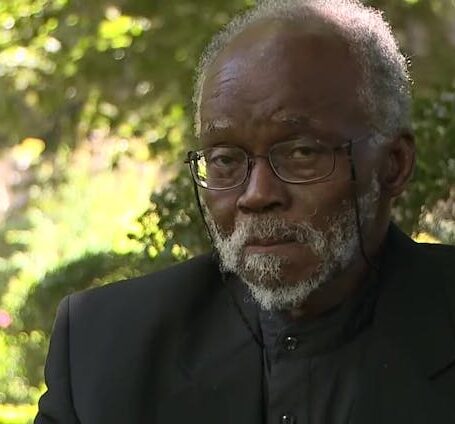Meanwhile, Impact Down Under
To find out what’s happening in Australia with impact, I spoke with two resident experts. Tamika Heiden, founder of Knowledge Translation Australia, which has just rebranded as the Research Impact Academy. Apparently, the change is necessary because, although awareness of the impact agenda is rising, there is still a lot of confusion around the terminology involved and the relationship between translation and impact. In fact, Heiden believes that awareness of the impact agenda remains low among many researchers there. She described how in some instances, research managers have taken on the role of writing the impact case studies without a broader institution-wide educational strategy around impact education. The justification for this has been not wanting to “bother” any researchers, because there is a feeling that the new Engagement and Impact Assessment (more on that below) may be a one-off. Based on Heiden’s experience running the award-winning, annual international Research Impact Summit, she also pointed out that academics around the world can struggle to understand that knowledge translation is a pathway to impact.
The other local expert is Erin Rayment, who is director of the Office of Research Development at the University of Southern Queensland and chair of Knowledge Commercialisation Australasia (KCA) – which represents organisations and individuals participating in or supporting the commercialisation of Australian publicly funded research. KCA is a founding member of the international Alliance of Technology Transfer Professionals (ATTP).
According to Hamish McAlpine of Research England, Australia is “very outward looking,” often borrowing elements of other impact systems to try. However, Heiden points out that the impact component of Britain’s Research Excellence Framework was actually an Australian invention, as part of a 2004 pilot of the Research Quality Framework. This component was dropped in 2007 with a change in government, but then picked up by the UK government with the 2008 Research Assessment Exercise, the precursor to the current Research Excellence Framework.
Australia’s smaller university system (41, generally large, institutions) recently just had the results of its fourth Excellence in Research for Australia exercise since 2010, including a new (and controversial) Engagement and Impact Assessment (EIA) which relies on narrative impact case studies, along with quantitative engagement metrics. Both are primarily for reputation’s sake, with no funding directly attached, although block grants may well be influenced. Heiden says it felt that the EIA was introduced quickly, causing a flurry of activity across the Australian sector as institutions scoured the globe for the latest thinking about ‘impact’. She flagged that it also raised the usual debate about whether the approach favours STEM over other disciplines. Rayment pointed out that there was a 2017 pilot.
There’s also the Australian National Survey of Research Commercialisation which has been running since 2000. And as if that all wasn’t enough, a far more controversial (and political) National Interest Test – defined as “the extent to which the research contributes to Australia’s national interest through its potential to have economic, commercial, environmental, social or cultural benefits to the Australian community” – has also been introduced this year by the current minister. Research has to be boiled down to a 150-word “national interest statement.” It remains to be seen if this survives the next election though.
Rayment explained that KCA supports the current Innovation Metric Review Taskforce, especially as it could improve the simplistic Global Innovation Index, a composite metric-driven international ranking focused on activity rather than impact. New approaches to innovation policy could better align and drive research activity with existing economic development metrics, e.g. increases in local jobs, gross domestic product created. Surveys such as the National Survey of Research Commercialisation could also be made more precise, new data such as on licensing and industry collaboration could be included, and funding could help train those across the whole “innovation ecosystem”. International collaboration could even result in a “global standard” of innovation impact metrics relating to knowledge exchange and technology transfer.
Heiden explained that with another upcoming election, there’s a split between those who think the ‘impact agenda’ will disappear along with the current government and those who see a wider global trend towards impact measurement. However, the Australian National Health and Medical Research Council, Australia’s key medical funder, recently introduced impact case studies as part of a track record for individual researchers across several of their funding schemes.
Heiden also mentioned that Sao Paulo in Brazil is considering an impact assessment, that they are already taking place in Hong Kong and Norway, and that after a review paper in New Zealand pathways to impact are already built into grant applications there in a sophisticated way.
The waking giant
And what about China? Although it’s grappling with those same questions, it’s coming at them with a more centrally planned and controlled national system, with a huge number of institutions that are less autonomous or varied.
Fielding points out that in some ways the routes to market are more straightforward in China due to closer links between government, industry and universities, with greater coordination from the centre possible (rather than market forces). He also points out that Praxis Auril has so far trained 400 Chinese people in knowledge transfer, demonstrating the value that the Chinese government puts on the UK approach to translating research into economic benefit.
McAlpine says the “Chinese Bayh-Dole Act,” the Measures for Intellectual Property Made under Government Funding Act, came about in 2002 bringing in a much-needed approach to intellectual property, albeit one focused on tech transfer rather than wider conceptions of impact or knowledge exchange.

































































































